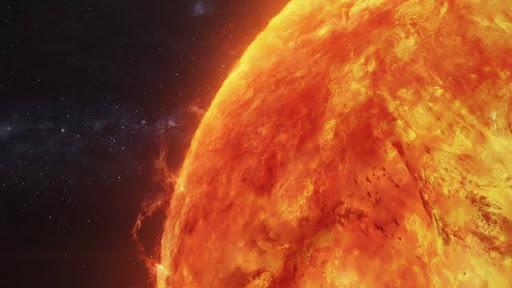
‘Peacock Jets’ on Sun Linked to Magnetic Flux Cancellation
The Sun, our star and the center of our solar system, is a complex and dynamic entity that is constantly undergoing changes. From its surface, we see the sun as a bright, glowing ball, but beneath its surface, there are many fascinating processes at work. One of the most recent discoveries in this field is the existence of “peacock jets” in the Sun’s lower atmosphere. These jets are recurrent fan-shaped eruptions that have been observed in the lower atmosphere of the Sun, and new research has shed light on the mechanism that drives them.
In a recent study published in the journal Nature Physics, a team of scientists from the Indian Institute of Science (IISc) and the Indian Institute of Technology (IIT) has discovered that these “peacock jets” are powered by magnetic flux cancellation. This process occurs when opposing magnetic fields in the Sun’s lower atmosphere cancel each other out, releasing a tremendous amount of energy in the process.
Magnetic fields are an integral part of the Sun’s dynamics, and they play a crucial role in shaping the star’s behavior. The Sun’s magnetic field is generated by the movement of hot, ionized gas (plasma) in its interior. This movement creates electric currents, which in turn generate the magnetic field. The magnetic field is strongest near the Sun’s surface, where it is responsible for the formation of sunspots, coronal mass ejections, and other solar phenomena.
The “peacock jets” that were observed are a type of solar jet that erupts from the Sun’s surface and extends into the lower atmosphere. They are characterized by their fan-shaped structure, with the base of the jet located near the Sun’s surface and the apex extending several thousand kilometers into the atmosphere. These jets are recurrent, meaning that they occur repeatedly at the same location on the Sun’s surface.
The researchers used computer simulations to study the behavior of the magnetic fields in the Sun’s lower atmosphere. They found that the opposing magnetic fields cancel each other out, releasing a tremendous amount of energy in the process. This energy is then released as the “peacock jet” erupts from the Sun’s surface.
The discovery of the “peacock jets” and the mechanism that drives them is an important step forward in our understanding of the Sun’s dynamics. The Sun’s magnetic field is responsible for many of the star’s behaviors, including the formation of sunspots, coronal mass ejections, and solar flares. By understanding the mechanisms that drive these phenomena, scientists can better predict the behavior of the Sun and prepare for potential disruptions to our technology.
The research has significant implications for our understanding of space weather and its impact on our technology. Space weather refers to the dynamic and variable conditions in space that can affect our technology and infrastructure. Solar flares and coronal mass ejections are two of the most significant types of space weather, and they can cause disruptions to our communication and navigation systems.
The “peacock jets” are a new type of solar phenomenon that has the potential to impact our technology in the future. By understanding the mechanisms that drive them, scientists can better predict the behavior of the Sun and prepare for potential disruptions to our technology.
In conclusion, the discovery of the “peacock jets” and the mechanism that drives them is an important step forward in our understanding of the Sun’s dynamics. The “peacock jets” are a new type of solar phenomenon that has the potential to impact our technology in the future. By understanding the mechanisms that drive them, scientists can better predict the behavior of the Sun and prepare for potential disruptions to our technology.
Source:






